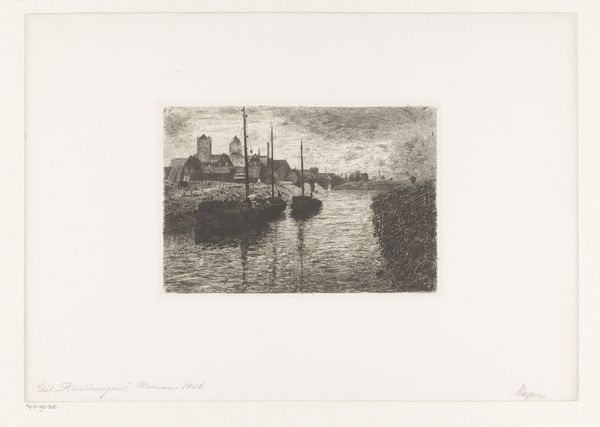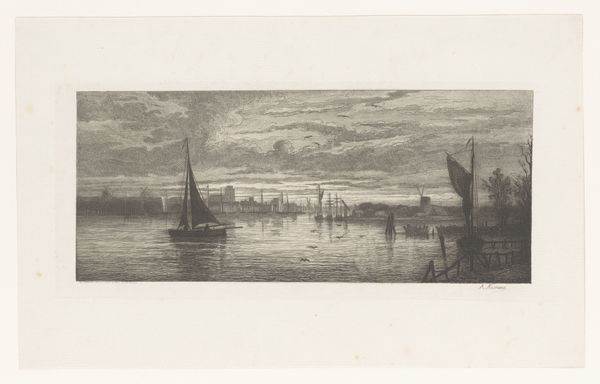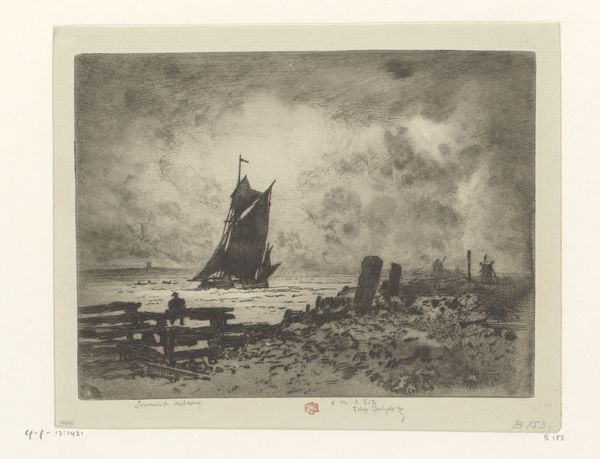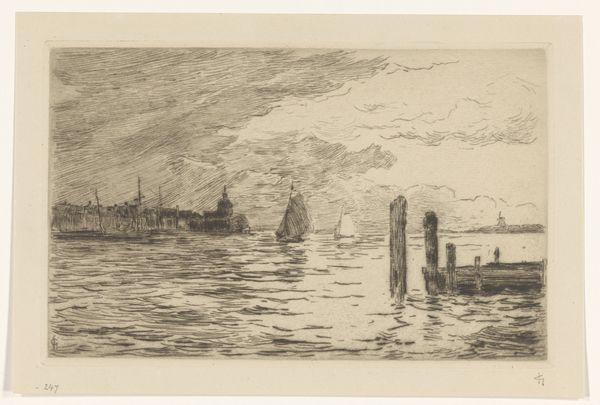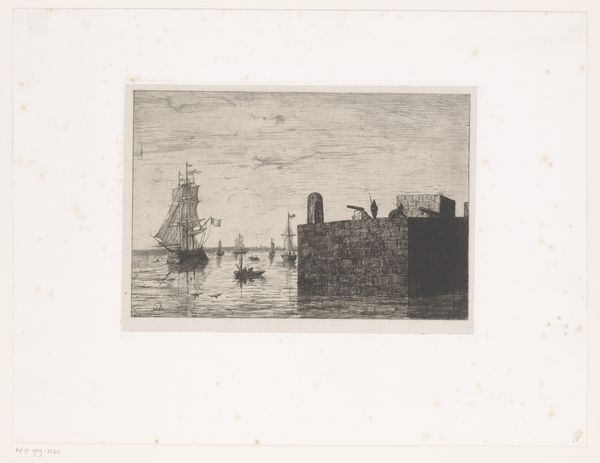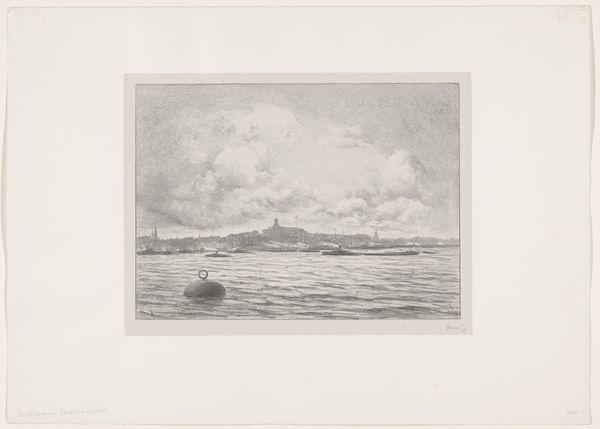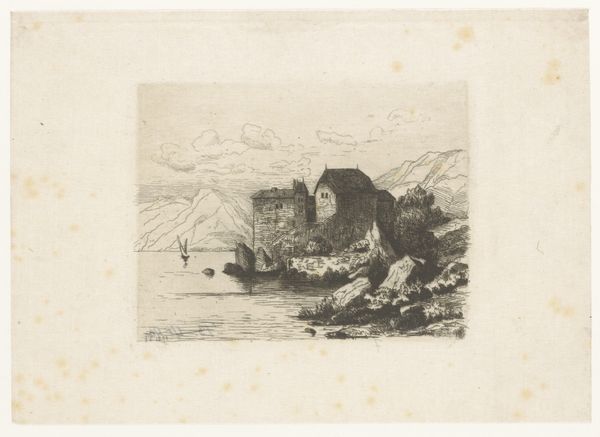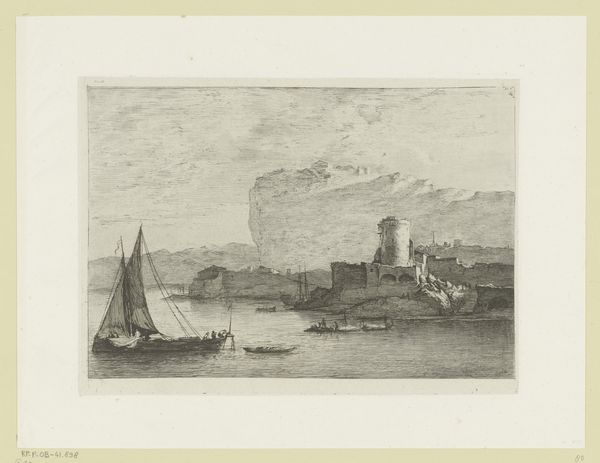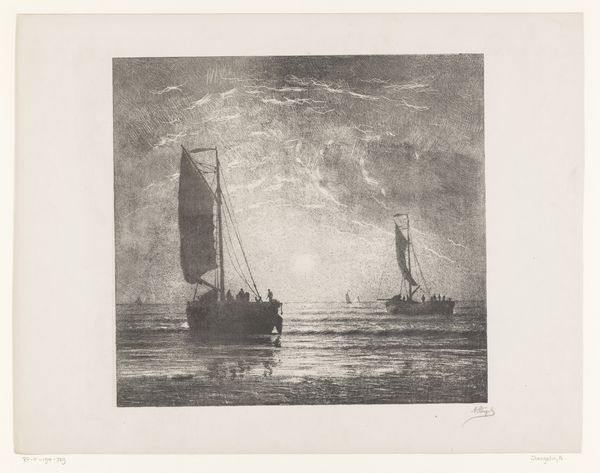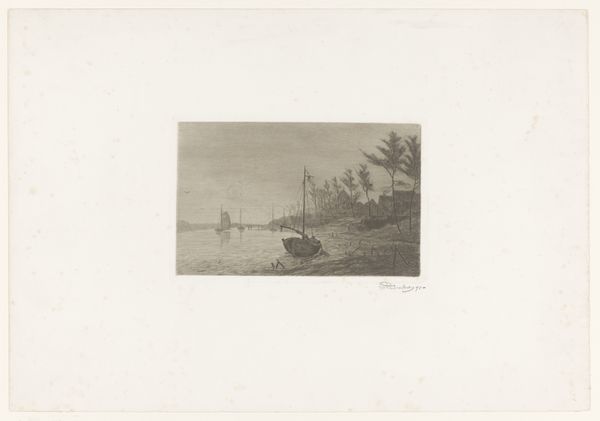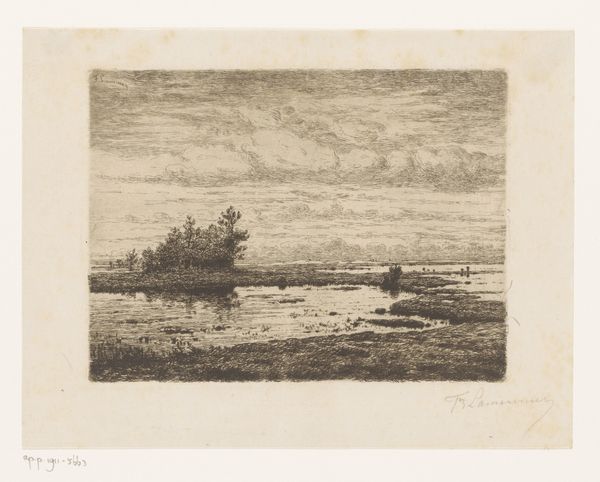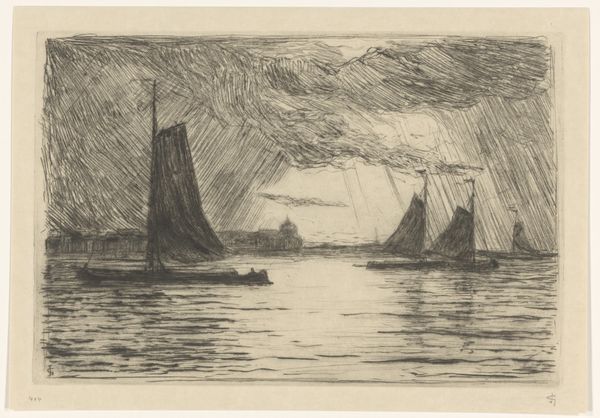
Maangezicht op de Noorse kust, met een gehucht en houten landingshoofd 1875 - 1904
0:00
0:00
print, etching
# print
#
etching
#
landscape
#
genre-painting
#
realism
Dimensions: height 186 mm, width 265 mm
Copyright: Rijks Museum: Open Domain
Curator: I feel the North Sea chill just looking at this, all muted greys and whites... It’s an etching by Carl Ernst Forberg titled, "Moon Face on the Norwegian Coast, with a Hamlet and Wooden Landing Stage," dating somewhere between 1875 and 1904. Editor: Yes, a really dramatic sky dominates. Foreboding almost, but in a cozy, end-of-the-world sort of way! The textures he's coaxed from the etching, especially in the water and sky...it's incredibly atmospheric. You can almost smell the salt. Curator: Forberg was really trying to capture a specific vision of northern coastal life during this period. Genre paintings were booming in popularity. We can imagine the socio-economic dynamics of the coastal towns of the region, as fishing became crucial. The moonlit aspect emphasizes both the harshness and stark beauty. Editor: Right! There's that tiny pier crammed with boats, these hardy folks going out on a possibly terrible night to scrape out a living...But what got to me is this overall mood of isolated persistence, the little hamlet hunkering down against the elements. See the tiny plumes of smoke! Curator: And look at how the moonlight reflects in the water, giving us a glimmer of hope. Remember the rise of printmaking also enabled this kind of artwork to become more democratic. Etchings such as this circulated wider, reinforcing romantic but also ‘realistic’ images of working communities. Editor: Makes you wonder who owned them, right? Were these prints mainly adorning the homes of city-dwelling collectors who were intrigued by depictions of working people? Were those romantic ideas reinforced, indeed? So many questions for such a seemingly simple scene. It’s like peering into someone else’s memory of a dream. Curator: Indeed, Forberg’s technical virtuosity paired with social context makes the artwork historically valuable. It really embodies the anxieties of realism, caught between beauty and a representation of raw labour. Editor: Ultimately it's haunting, both fragile and strangely enduring. Something in those swirling skies makes me grateful to be warm and inside! Curator: Well said. It's art's job to do that I think. Provide perspectives we may never see otherwise.
Comments
No comments
Be the first to comment and join the conversation on the ultimate creative platform.

